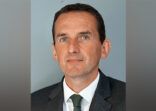The current environment is especially challenging for fixed income investors.
Negative real rates make developed market government bonds unappealing, the correlation between the S&P 500 and real yields has turned positive which negates the diversification benefits of conventional bond allocations, and the risk of a resurgence in inflation as economic activity recovers could push interest rates higher.
“In these circumstances, a flexible approach can tap into the widespread demand for credit products, capture relative value between credit classes and deploy a dynamic hedging strategy through the use of CDS (credit default swaps) indices and options to provide downside protection,” said Anna Karim, investment director for fixed income at Federated Hermes International, at a roundtable discussion with five senior Singapore fund selectors hosted by FSA last week.
“An unconstrained, high conviction investment strategy across the global liquid-credit spectrum captures superior relative value throughout credit markets as conditions change,” she said.
The international business of Federated Hermes was $43.6bn as at 30 June 2020, according to the firm.
Its $753m Federated Hermes Unconstrained Credit Fund, managed in London by Fraser Lundie and Andrew Jackson, can invest in a wide range of debt securities.
These include developed and emerging market investment grade and high yield corporate fixed income, government securities, convertible bonds, preferred stocks, loans, and asset-backed securities, as well as derivatives such as CDS and credit-index options.
The fund managers generate alpha through issuer and security selection throughout corporate capital structures. They focus on large bond issues to ensure individual holdings are liquid – which is especially important when markets are volatile.
Although the fund does not have a designated benchmark, the managers aim to generate a total return of at least US dollar libor plus 5%. The fund has surpassed the objective, with a cumulative return of 27.45% since inception on 30 May 2018, compared with 18.1% by its target, according to Federated Hermes data.
Its 10.96% annualised return (to 31 October 2020) has been achieved with Sharpe ratio (a measure of risk-adjusted returns) of 1.11. On average it has held 185 individual bond issues, with a credit rating of BB+ and an effective duration of 3.55.
ACTIVE HEDGING
A key feature of the strategy is the use of an actively-managed options overlay — typically buying put options on representative indices — which aims to protect returns from market and macro risks.
As much as 7.79% of the fund’s cumulative return has been earned from the its hedging activities, according to Karim.
“It provides downside protection while supporting conviction in credit selection,” she said.
For instance, the fund managers adjusted the options overlay as the credit markets plunged in March this year, taking profits while ensuring the fund had some protection should the markets continue to sell off, by rolling positions into longer-dated, bigger notional and further out-of-the money contracts.
“Active management of the options book allowed the team to crystallise profits, while maintaining convexity and a degree of protection during the sell off,” said Karim.
Indeed, the total contribution of the hedge overlay to the Unconstrained Credit Strategy between 24 February and 31 March was 9.35%, compared with a decline of 14.38% by the ICE BofA Global High Yield USD Hedged Index, according to Federated Hermes and Bloomberg data.
RISK-RETURN BALANCE
The investment process for the fund combines top-down analysis with individual stock selection.
In a bi-monthly credit strategy meeting (CSM), drivers of credit markets, such as macro fundamentals, valuations, sentiment and technical factors are reviewed, ideas for alpha generation are assessed, and an overall score for risk appetite is determined.
Among the CSM’s most recent conclusions are that global economic conditions are improving, corporate earnings are surprising on the upside, temporary cost-cutting measures are being reduced, positive news flow has led to a significant increase in demand for risk assets, and the portion of negative yielding assets is elevated and therefore high yield credit offers relative value.
Key risks include setbacks to the vaccine roll out and US trade tensions, although the likelihood of an inflation surprise in the short-term remains low, said Karim.
“The CSM steers the credit research team on where to identify the building blocks to construct portfolios,” she said.
Companies are screened based on their valuation, contribution to risk (for instance, as measured by “duration times spread”), recent trading volatility and news flow.
ESG is also integrated through proprietary analytical tools in the process, including engagement with companies, so responsibility is embedded in every investment decision, according to Karim.
A final score incorporating these factors is assigned to each research recommendation, and then fund managers Lundie and Jackson choose the debt instruments that offer the most value.
In terms of relative value opportunities for the Unconstrained Credit Fund, the managers like the short end of the yield curve, prefer BB credits, see opportunities in Europe while turning more cautious about emerging markets, and favour cash bond over CDS.
“However, volatility is likely to remain which will likely emphasise the advantages of an active and flexible investment approach,” said Karim.

















